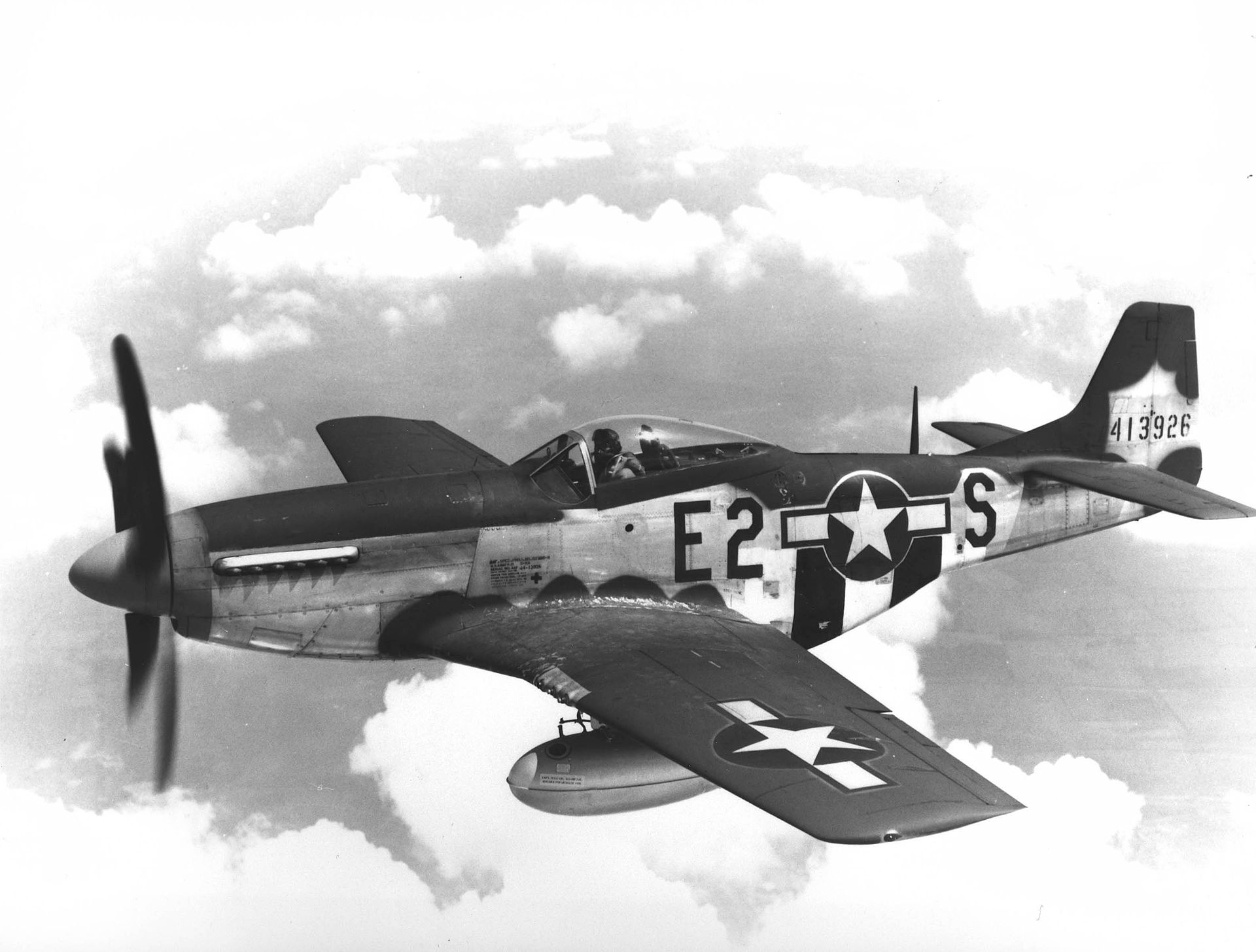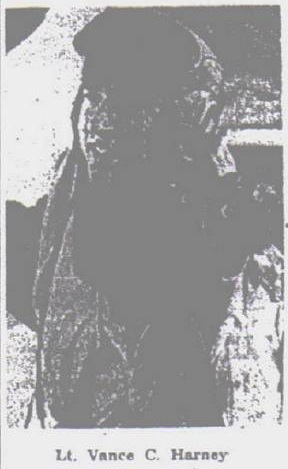

2nd Liuetenant Vance C Harney USAAF
A P51D-10 Mustang 44-14836, OC-x from 359 Fighter Squadron (356 Fighter Group) crashed at Kingsfield, Spreadeagle Farm, Biggleswade .


Please note that the majority of the text of this page has been culled from the investigation into the incident carried out by Biggleswade History Society, which quotes several original reports that were compiled after the accident.
At around 09:21 a.m. on a cold and frosty 16th January 1945, a group of 19 Mustang P51D fighter planes of the 359th Fighter Squadron from the 356th Fighter Group took off from RAF Martlesham Heath in Suffolk accompanied by, and under the command of Major Strait, USAAF of the 361st Fighter Squadron with a group of 23 aircraft and which also included the 360th Fighter Squadron with a group of 12 aircraft to carry out the task of escorting of a large number of B17 Flying Fortress bombers on a raid on a synthetic oil plant and tank factory at Magdeburg, European Theatre of Operations Mission number 796.
Shortly after crossing the Dutch coast Lt Harney indicated to the group leader that his radio had failed, and that he was returning to base. He somehow indicated an escort would not be necessary. During the day, the weather over England had been steadily deteriorating to the extent that the remainder of the group after completing their escort mission were ordered to land on the continent and not attempt to return to their base in England. After ending their mission at 1345, the Mustangs landed at various bases in France such as Ghent, Cambrai, Merville, Beauvais and Tille. It is presumed that due to his radio problems, Lt. Harney was not aware of the bad weather in England until he had returned and begun looking for his airfield.
Two witnesses from Biggleswade reported hearing the sound of an aeroplane engine seemingly running roughly. Cloud cover was very low, perhaps as low as 300 feet. Mr. Arthur Edward Robinson, aged 35, of 10 Potton Road, Biggleswade was picking brussel sprouts at Spreadeagle Farm when he first became aware of the loud engine noise. Looking up he saw the Mustang diving very fast. Close to the ground, it made a right bank but crashed with great force and burst into flames just a few seconds after Mr. Robinson had first become aware of it. Fifty-year-old Mr. Jacob John Pope of 19 Drove Road, Biggleswade also heard the aircraft from where he was cycling near his home. He saw it cross Drove Road in a straight line, and noted a length of "red glow" emanating from the rear of the aircraft. He described the engine noise as a "...a very harsh buzzing...", but despite the suggestion of an engine problem, it was travelling very fast. Moments later, he saw that the aircraft had crashed in a field on Spreadeagle Farm. Both men timed the incident at about 1.50 p.m.
Whilst almost certainly the radio problem prevented Lt Harney from receiving any weather reports, the loud and harsh noise of the engine which was noted by both the witnesses also suggests an engine issue. However, it might be simply that due to the very low ceiling of cloud, Harney had realised very late that he was near the ground and was attempting to power into a climb.
Bedfordshire archive records in reference WW2/AR/CO/2 record the messsages that came into the Air Raid Warden's station shortly after the crash:
IN MESSAGES

The image shows the small width of the crater indicating a high speed impact. Wreckage surrounds the area. The picture was taken by United States Military personnel shortly after the accident had occurred. The Accident Review Board convened on 25th January 1945 determined: "...it is believed by this board that the plane spun through overcast and crashed." With no other facts available, responsibility for the accident was 100% undetermined, and no recommendations were issued. The bad weather was considered to have been a factor in the incident.
Lt Harney survived a crash landing at Stansted, on 12th November 1944 in P-47D Thunderbolt No 42-26309 without suffering any injury. He died on his 22nd combat mission. Harney was initially buried in the U.S. cemetery at Madingley, Cambridge but his body was later exhumed and transported to his home-land in Park County, Indiana in December 1948. His name appears on the USAAF memorial at Martlesham Heath.